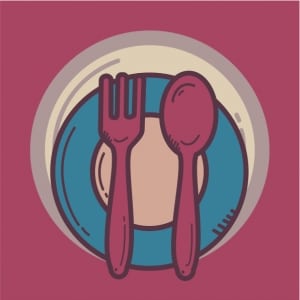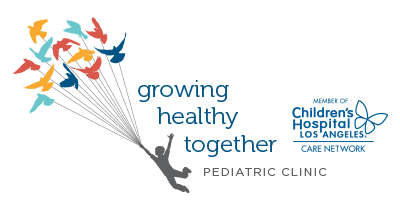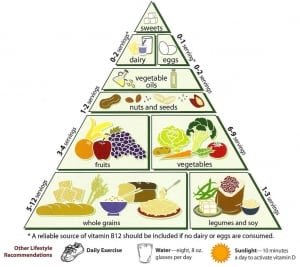 From birth to childhood, your kid will make many eating transitions that affect toddler nutrition. Even before your kid starts eating real food, they might have already made their way through breast milk, formulas, cow milk, and milk alternatives. As they make the transition into eating baby foods and then grown-up foods, it’s important to provide healthy choices for them.
From birth to childhood, your kid will make many eating transitions that affect toddler nutrition. Even before your kid starts eating real food, they might have already made their way through breast milk, formulas, cow milk, and milk alternatives. As they make the transition into eating baby foods and then grown-up foods, it’s important to provide healthy choices for them.
Self-feeding for Toddler Nutrition
Pay attention to your child’s cues and try not to stress about this process. We at GHT believe in helping our kids through these transitions in a way that’s both positive and healthy. Leave plenty of room for messes and confusion. Use unbreakable dishes and cups. Move your kid out of the high chair when they seem ready. At about 18 months, they can usually use a spoon or fork, but may not want to. Every day is different from the last.
Babysit your Kid
It’s important to sit with your child while they eat. Not only will this foster a family meal setting for them, but it will also help you to keep an eye on them while they’re still figuring out chewing and manipulating food with their mouth. According to the AAP, “Children don’t fully develop the grinding motion involved in chewing until they’re about 4 years old, so stick with foods that are small and easy to chew and avoid those that might be swallowed whole and get stuck in your toddler’s windpipe.”
Maximize your Success
- Offer a variety of foods.
- Make food fun.
- Set a good example.
- Include them in cooking and setting the table.
- Allow them control over their own portions.
- Don’t force your child to eat or use food as a reward.
- Limit fruit juice.
Healthy Fat for Toddler Nutrition
 Don’t place any restrictions on fat consumption during the first two years of life. Even if you’re worried that your child may become overweight or obese, fat in the diet is crucial for growth and development. During the first two years of life, about half of all calories should be calories from fat. After two years, slowly change their diet until fat makes up about one-third of consumed calories.
Don’t place any restrictions on fat consumption during the first two years of life. Even if you’re worried that your child may become overweight or obese, fat in the diet is crucial for growth and development. During the first two years of life, about half of all calories should be calories from fat. After two years, slowly change their diet until fat makes up about one-third of consumed calories.
Serving Sizes
As you go, you’ll find that toddlers do not require a lot of food. According to the AAP, “Each day, a child between ages 1 and 3 years needs about 40 calories for every inch of height.” A kid that is 32 inches tall should be eating about 1300 calories a day. This estimation varies between kids with different activity levels and builds.
- Grains: 6 servings (250 cal)Bread, cereal, crackers
- Veggies: 2-3 servings (75 cal) Cooked veggies
- Fruits: 2-3 servings (75 cal) fruit, juice
- Dairy: 2-3 servings (300-450 cal) Milk, cheese, yogurt
- Protein: 2 servings (200 cal) Meat, fish, poultry, tofu, eggs, nuts
- Legumes: 2 servings (200 cal.) beans, peas, lentils
Picky Eaters
It is very normal for toddlers to be picky eaters. They may prefer one or two very specific foods and then refuse to eat anything else. Favorite foods might change on a daily basis and those changes can be unpredictable. They may eat more on some days than others, or more at breakfast than dinner. Try not to sweat these changes in your toddler’s nutrition. Focus instead on finding healthy food choices and just accept that their food preferences will change. As time goes on, your kid’s eating habits will stabilize.
Supplements
If your child is not receiving the nutrition they need from the food they eat, they may require supplementation. In most cases, parents can provide what a child needs, though we typically see deficiencies in iron and in vitamin D. Be sure to invest in iron-fortified cereals, meat or veggies high in iron. Vitamin D can be taken in fortified milk, milk alternatives, or in vitamin form.
Snacking for Toddler Nutrition
As children, our bodies are using a lot of energy and we require more frequent feedings. Make time for a midmorning snack and an afternoon snack so they won’t interfere with meals. Provide healthy, balanced snacks for in between meals.
- Fresh fruits
- Dried fruits
- Veggies
- Cheese, cottage cheese, yogurt, milk
- Bread (Whole wheat bread, bagels)
- Crackers, dry cereal
- Pretzels
- Fish
- Peanut butter
 Television Advertising
Television Advertising
Food advertisements in commercials and in programming can be damaging to your toddler’s nutrition. According to the AAP, “some studies show that children who watch over twenty-two hours of TV per week (over three hours of screen time a day) have a greater tendency to become obese.” Young children are receptive to advertisements for candy, sweets, and other bad foods. It’s important to help them understand healthy eating despite these ads. Try to avoid too much exposure to advertisements that can damage a healthy image.
Vegetarian Toddler Nutrition
Living in a vegetarian household can have great health benefits, however, can sometimes present a challenge to nutrition. Be mindful of what your child is missing from meat products. Supplement instead with plenty of beans, avocado, nuts and nut butter, seeds, dried fruits, vegetable oil, eggs, soy, and dairy products.
Unsafe Foods
Young children don’t consider the heat of the food they’re eating before they dig in, so be sure that the food you serve them is a good temperature. Avoid foods that have a lot of spice, salt, butter, or sweets. These kinds of food additives will prevent your kid from experiencing natural tastes and may harm them in the long run.
Large chunks can potentially plug their airway. Kids don’t learn to grind their food until about 4 years of age. Also, eating on the run or while talking increases the risk of choking. After age one, your child can begin taking liquids from a cup. They require less milk as his food is getting more nutrition from solid foods.
Foods to Avoid for Choking Risk
- Raw carrots, celery, green beans
- Large pieces of hot dog
- Cherries with pits
- Whole grapes
- Round, hard candy
- Peanuts, other nuts
- Large globs of peanut butter
- Popcorn
Teach Toddler Nutrition by Example
Children of overweight or obese parents have an increased probability of becoming overweight or obese themselves. Choose good habits for yourself and this will transfer onto your kids. Every day isn’t perfect, but it’s important to keep health as a priority. Healthy parents make healthy babies, after all.
Include your kids in the conversation! Use good resources and make sure they have a pretty good understanding of nutrition to usher them into a lifetime of health. For questions or comments, respond to this blog or contact us.





